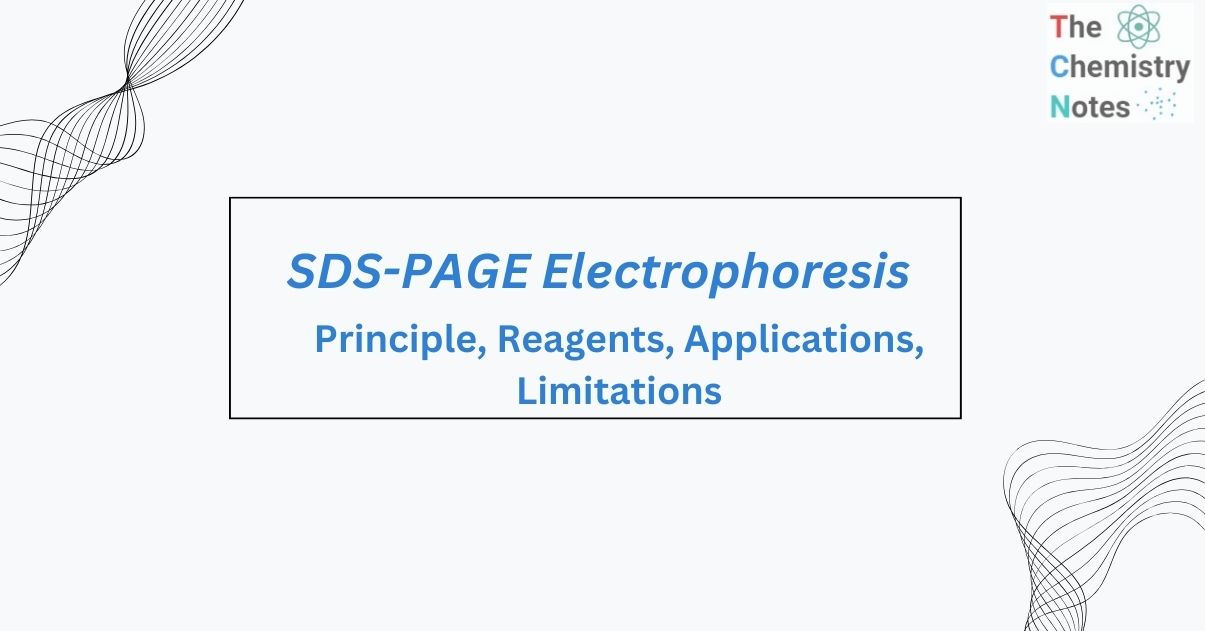
SDS-PAGE electrophoresis is the most extensively used technique for separating proteins from complex mixtures. It is important in molecular biology and a wide range of subfields of biological research.
SDS PAGE ( sodium dodecyl sulfate-polyacrylamide gel electrophoresis) is a technique for separating proteins depending on their molecular weight. To separate protein molecules based on their electrophoretic mobility, it is a commonly used approach in forensics, genetics, biotechnology, and molecular biology.
The proteins and SDS form micelles and their migration speed in the gel matrix is proportional to their molecular weight. As a result, SDS PAGE allows for protein separation based on molecular weight.
What is SDS-PAGE Electrophoresis?
SDS-PAGE Electrophoresis is an essential method because it allows proteins to be separated based on their masses. Ulrich K. Laemmli, a professor at the University of Geneva, developed the system.
The use of sodium dodecyl sulfate (SDS, also known as sodium lauryl sulfate) and polyacrylamide gel in SDS-PAGE greatly reduces the influence of structure and charge, and proteins are separated based on polypeptide chain length.
SDS is a detergent that binds to the protein backbone at a constant molar ratio and has a significant protein-denaturing effect. Proteins unfold into linear chains with negative charge proportionate to polypeptide chain length in the presence of SDS and a reducing agent that cleaves disulfide bonds required for optimal folding.
This is often used to separate proteins with molecular masses ranging from 5 to 250kDa. The combination of SDS and Polyacrylamide gel reduces the influence of structure and charge, allowing proteins to be sorted entirely on the basis of their molecular weights.
Principle of SDS-PAGE Electrophoresis
This method is based on the principle that when exposed to an electric field, molecules that have been segregated based on their electrophoretic mobility would move toward the corresponding electrodes.
The electrophoretic mobility of a molecule is determined by its structure, shape, and charge. Protein structure and charge are primarily responsible for migration. Smaller molecules move quicker because there is less obstruction, whereas larger molecules move slower. After all, there is more hindrance. As a result, molecules are solely divided according to their molecular weights.
Reagents used in SDS-PAGE Electrophoresis
β Mercaptothion / dithiothreitol (DTT)
The secondary structure of the protein is determined by the disulfide bridges that exist between the polypeptide chains. Mercaptoethanol, on the other hand, disrupts the disulfide connections in the protein structure. When bonds are broken, the S-S bonds transform into -SH, -SH bonds, leaving the peptide end free.
Sodium Dodecyl Sulfate (SDS)
SDS is used in the production of sample buffer to give the protein a negative charge. Following the Mercaptoethanol treatment, all of the proteins are in a linear form, allowing SDS to impart a negative charge and all of the proteins to travel toward the positive electrode. As a result, they are only distinguished by their molecular size.
SDS is also present in the gel to ensure that the proteins remain linearized and their charges are masked throughout the run.
The molecular radius of an SDS-coated protein is the most important element in influencing its mobility. SDS-coated proteins are linear molecules, 18 Angstroms broad and with lengths proportionate to their molecular weight, implying that the molecular radius is governed by the protein’s molecular weight.
Bromophenol blue
Bromophenol blue is employed in electrophoresis as a tracking dye because it adds color to the protein being separated in the gel. It is also used with a test solution. It contains a small negative charge, allowing it to reach the positive electrode ahead of the protein molecule. It denotes protein movement towards the electrode.
Gel
Because of the high-friction environment of a gel matrix, the differing mobilities will be highlighted.
Polyacrylamide gel is a good choice since it is chemically inert and, more importantly, can be easily prepared at a number of concentrations to provide varied pore diameters, resulting in a variety of separation conditions that can be modified based on your demands.
Applications of SDS-PAGE Electrophoresis
- SDS-PAGE electrophoresis is employed in peptide mapping.
- It investigates post-translational changes.
- It is used in HIV tests to separate the HIV proteins.
- SDS-PAGE electrophoresis is used to determine the size of a protein.
- It’s used to calculate the molecular weight of molecules.
- It is used to calculate the protein’s size.
- It is used to compare the composition of polypeptides of various structures.
- It is used to calculate the protein purity.
- It is employed in Western blotting as well as protein ubiquitination.
Limitation of SDS-PAGE Electrophoresis
The electrophoretic technique is useful for visualizing proteins and their structures, but it is ineffective for identifying the strain’s RNA or DNA structure. DNA and RNA, as we know, are both Nucleic acid components. As a result, if the component is contaminated with nucleic acids, the structure will be obscured on the SDS PAGE gel.
SDS is an anionic detergent that is utilized in the denaturation of the fundamental properties of any protein molecule. It is negatively charged, and when it is strongly drawn toward the electric field’s node, it breaks down the molecule’s structure.
References
- Ferrier D. R. (2017). Lippincott illustrated reviews : biochemistry (Seventh). Wolters Kluwer.
- https://ulbld.lf1.cuni.cz/file/4576/electrophoresis-in- biochemistry.pdf
- https://byjus.com/biology/sds-page/#:~:text=SDS%20PAGE%20or%20Sodium%20Dodecyl,based%20on%20their%20electrophoretic%20mobility.
- https://www.vedantu.com/biology/sds-page.
- https://unacademy.com/content/kerala-psc/study-material/bioinstrumentation/sds-page/
